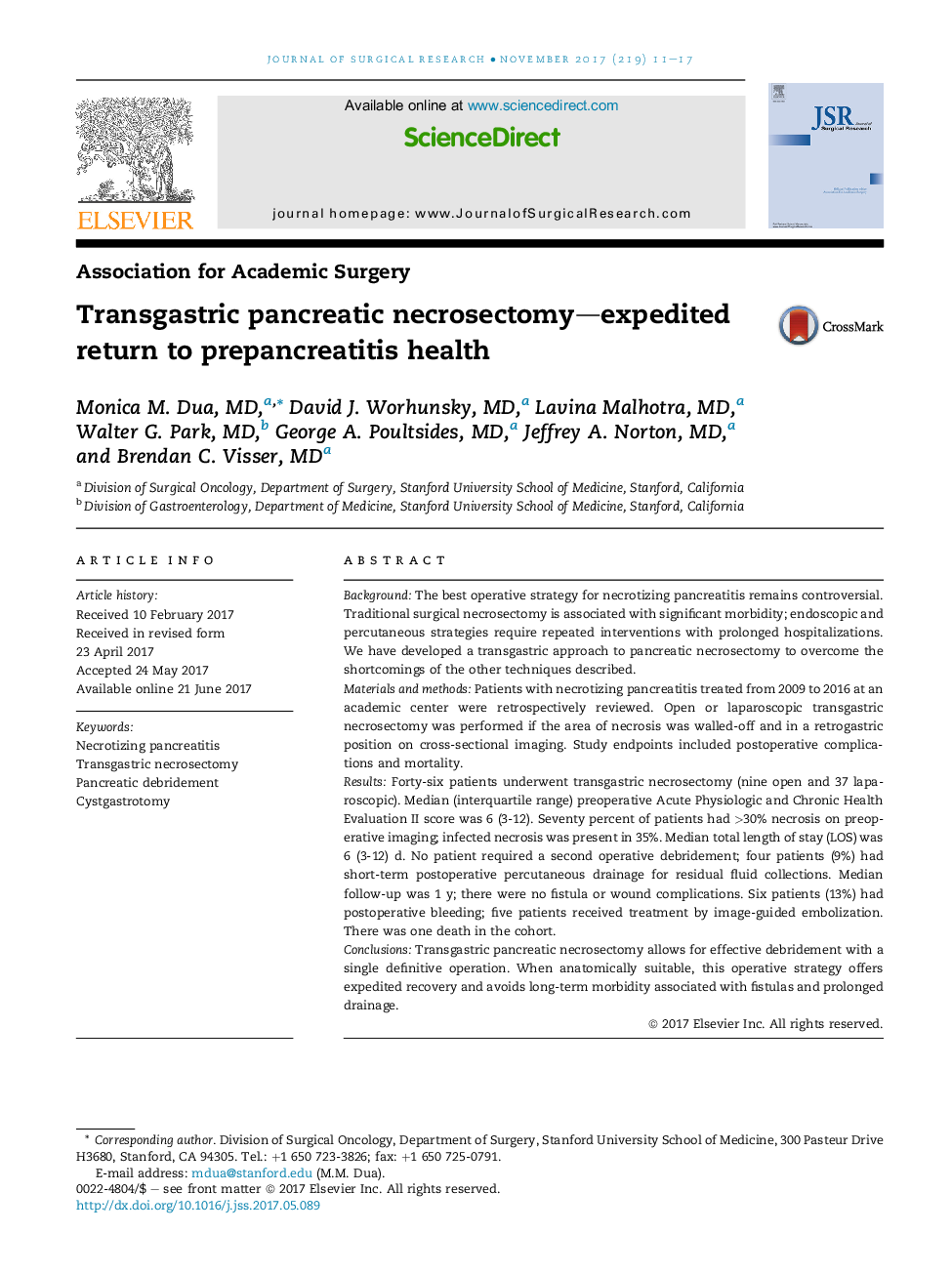| Article ID | Journal | Published Year | Pages | File Type |
|---|---|---|---|---|
| 5733971 | Journal of Surgical Research | 2017 | 7 Pages |
BackgroundThe best operative strategy for necrotizing pancreatitis remains controversial. Traditional surgical necrosectomy is associated with significant morbidity; endoscopic and percutaneous strategies require repeated interventions with prolonged hospitalizations. We have developed a transgastric approach to pancreatic necrosectomy to overcome the shortcomings of the other techniques described.Materials and methodsPatients with necrotizing pancreatitis treated from 2009 to 2016 at an academic center were retrospectively reviewed. Open or laparoscopic transgastric necrosectomy was performed if the area of necrosis was walled-off and in a retrogastric position on cross-sectional imaging. Study endpoints included postoperative complications and mortality.ResultsForty-six patients underwent transgastric necrosectomy (nine open and 37 laparoscopic). Median (interquartile range) preoperative Acute Physiologic and Chronic Health Evaluation II score was 6 (3-12). Seventy percent of patients had >30% necrosis on preoperative imaging; infected necrosis was present in 35%. Median total length of stay (LOS) was 6 (3-12) d. No patient required a second operative debridement; four patients (9%) had short-term postoperative percutaneous drainage for residual fluid collections. Median follow-up was 1Â y; there were no fistula or wound complications. Six patients (13%) had postoperative bleeding; five patients received treatment by image-guided embolization. There was one death in the cohort.ConclusionsTransgastric pancreatic necrosectomy allows for effective debridement with a single definitive operation. When anatomically suitable, this operative strategy offers expedited recovery and avoids long-term morbidity associated with fistulas and prolonged drainage.
